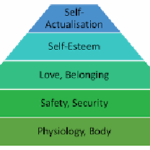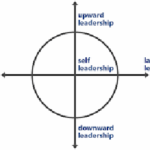Also known as: Multi-perspective thinking, multiperspective analysis, multiperspective management
Multiperspectivity is a methodical management approach that integrates multiple viewpoints to deliver differentiated yet holistic problem analyses and solution strategies. This concept is increasingly used in organizational theory, corporate strategy, and leadership development to manage complexity, ambiguity, and change.
Origins and Conceptual Foundations
The idea of multiperspectivity originates from creative thinking methodologies such as Edward de Bono’s Six Thinking Hats (1985). In this model, six symbolic “hats” represent different cognitive approaches to the same problem:
-
🧢 White Hat: Focus on facts, data, and objective information
-
🎩 Red Hat: Emotional responses and intuitive insights
-
🧢 Black Hat: Critical judgment and risk identification
-
🎩 Yellow Hat: Optimistic viewpoints and potential benefits
-
🧢 Green Hat: Creativity and innovation
-
🎩 Blue Hat: Process control and meta-thinking
This model is widely used in managerial training to encourage lateral thinking, challenge cognitive biases, and expand the thinking capacity of decision-makers (→ motivating leadership).
Multiperspectivity in Organizational Theory
Gareth Morgan (1986) applied multiperspectivity to organizational analysis through the use of metaphors, viewing organizations as:
-
Machines
-
Organisms
-
Brains
-
Cultures
-
Political systems
-
Psychic prisons
-
Systems in flux
-
Instruments of power
Each metaphor serves as a lens to understand organizational dynamics, reflecting different management paradigms and facilitating situational diagnosis and strategic decision-making.
Scholz’s Organizational Perspectives (2000)
According to Christian Scholz, managing modern organizations requires the explicit and simultaneous application of several interconnected perspectives:
-
Strategic – Goals and long-term planning
-
Mechanical – Structures and formal systems
-
Organic – Growth, adaptation, and development
-
Cultural – Values, beliefs, and corporate culture
-
Intelligent – Knowledge, learning, and innovation
-
Virtual – Digital collaboration and network structures
Each perspective draws on theory-based models, empirical findings, and practical tools, forming a structured framework for both analysis and design in multi-perspective organizational development.
Application Process
Multiperspectivity involves a step-by-step approach:
-
Analyze the issue from each individual perspective.
-
Generate distinct solutions per perspective.
-
Compare and integrate the findings for comprehensive insight.
Tools like the Syntegrity Method (Beer, 1994) can support this integrative process, particularly in complex strategic planning or cross-functional problem-solving.
Advantages of Multiperspectivity
-
Encourages holistic decision-making
-
Reduces cognitive bias
-
Reveals interdependencies between organizational elements
-
Enhances collaboration and communication across departments
Criticism
Some critics argue that over-reliance on metaphors may restrict understanding by oversimplifying or ignoring elements outside the metaphorical framework. However, this concern primarily targets monoperspective thinking, not multiperspectivity itself.
« Back to Glossary Index





![15 Employee Offboarding Templates That Save Hours of HR Time [Free Downloads] 15 Employee Offboarding Templates That Save Hours of HR Time [Free Downloads]](https://i1.wp.com/www.hrcloud.com/hubfs/Header.png?w=150&resize=150,100&ssl=1)
